9 Outlandish Places to Visit in Gangtok
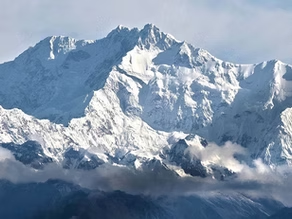
From Nathula pass to Banjhakri falls, Gangtok is home to some of the world’s most spectacular views and sceneries. It is a living and active slice of north-eastern heaven, with just the right mix of everything from a fusion of cultural identities to modernity. There are a number of places to visit in Gangtok. The capital city of Sikkim is highly appealing, refreshingly lively, and crowned by clouds. It also offers a wonderful view of Mt. Kanchenjunga from afar. The picturesque hill station is surrounded by hills and sky and when viewed from a cable car, the kaleidoscopic splendor and magnificent curving hill roads are even more spectacular. Here are a few terrific places to start exploring when you need a breather from the city’s nonstop bustle: Tashi Viewpoint Himalayan Zoological Park Nathula Pass Fambong Lho Wildlife Sanctuary MG Marg Phodong Monastery Reshi hot springs Banjhakri Falls Rumtek Monastery Best Places to Visit in Gangtok With its incomparable landscapes and exquisite monasteries and attractions, Gangtok is vibrant and fascinating. You may be eager to move on and see more of Sikkim once you’ve seen the best of it. For now, there’s enough excitement in there to last your entire trip. 1. Tashi Viewpoint Image by Yuraj Pradhan Tashi View Point is an ideal location to soak in the splendid views of the surrounding mountains, valleys, and Gangtok. This popular tourist destination is noted for having some of the best sunrise and sunset views. As the sun slowly moves away from this vantage point, one can see the Kanchenjunga and Siniolchu Peaks change color, as well as notable monasteries of Gangtok, Phodong, and Labrang. The magnificent Tashi Viewpoint is unrivaled because of its unspoiled atmosphere, which has been created in such a way that travelers can better understand the Himalayan trance. This place additionally serves as a great picnic spot due to the presence of an eatery and shelters close to the viewpoint site. In addition to its serene environment, the scenic ambiance contributes substantially to the travelers’ ability to enjoy views of the Phodong Monastery and Labrang Monastery by this place. Fee: Free Timings: 5 am to 6 pm 2. Himalayan Zoological Park Image by Nanda Ramesh In Sikkim, the Himalayan Zoological Park is a must-see for wildlife enthusiasts. The Park was created to protect wildlife while maintaining them in their natural habitat. Several Himalayan wildlife species can be found in the park. Himalayan Monal Pheasant, Himalayan Red Panda, Snow Leopard Cat, Goral, Himalayan Palm Civet, Himalayan Black Bear, and Crimson-Horned Pheasant are only a few of the Himalayan species that can be found here. The Himalayan Zoological Park is Sikkim’s first zoological park. The Park achieves the illusion of a modern zoo, in which animals are raised in natural settings. The months of mid-February to May and mid-September to December are the finest times to visit the place. The Forests, Environment, and Wildlife Management Department of the Government of Sikkim looks after the park. The zoo has a café, gift shop, drinking water stations, restrooms, and a watchtower from which you can enjoy a nice view of the region. One must explore the Himalayan Zoological Park in Gangtok to experience the natural habitat of a variety of species while taking in the wonderful scenery. Fee: 25 INR Timings: 9 am to 4 pm (closed on Thursday) 3. Nathula Pass Image by Huzefa Bagwala Nathula is an elevated pass on the old silk route near the Indo-Chinese border. Every year, a large number of tourists go here to appreciate the magnificent hike into the valley while reveling in the rhythmic cascades that line the path between Gangtok and Nathula. It has lessened the distance between significant Buddhist and Hindu pilgrimage sites, helping the economy and strengthening relations with China on the frontier. The route, which runs over 70 kilometers from Gangtok and passes by the turquoise blue Tsomgo Lake and the spectacular Baba Harbhajan Mandir, is an adventure in and of itself. The Border Gates of India and China, a battle memorial, and an India Army Exhibition Centre highlight the border checkpoint at Nathula Pass. On a clear day, Nathula Pass offers spectacular views of Mt. Chomolhari. You can see Chinese armed forces covering their side of the border as you approach closer to it. Tourists are allowed to snap photographs in and around this high-altitude pass, contrary to popular belief. Occasionally, you can shake hands with Chinese soldiers on the other side of the border. Fee: 200 INR Timings: 8 am to 6 pm (Wednesday to Sunday) 4. Fambong Lho Wildlife Sanctuary Image by Vladimir Cech The Fambong Lho Wildlife Sanctuary is rich in a diverse group of mammals and birds. This sanctuary also includes enclaves, including Mangan, a tourist hotspot. There are no shops or restaurants there, so you need to obtain a stay permit and bring your meals, including lunch, dinner, and snacks. If you’re a birdwatcher you will like Fambong Lho since it is home to endangered Rufous-headed hornbills and laughing thrushes. Animals such as the red panda, barking deer, and yellow-throated marten also inhabit the sanctuary, and you will find flora such as rhododendron and orchids. Various towers have been constructed in the forest to allow tourists to have the closest view of the colorful birds and animals. For thrill-seekers, the sanctuary also has some excellent hiking paths. Within the sanctuary, there are four jungle pathways. Fambong Lho is packed with things to see and the area is quite spread out, so you may want to hire a trail guide to show you around. Fee: 5 INR Timings: 8 am to 2 pm 5. MG Marg Image by Soumyajit Pramanick MG Marg is like an addition to an open shopping mall where locals and visitors alike may enjoy casual strolls or
Road Trip to Jodhpur
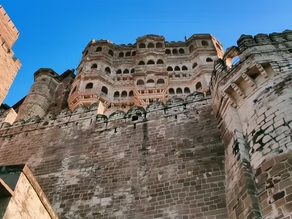
The Blue City of Jodhpur is a stunning fort town in Royal Rajasthan that sits on the verge of a huge emptiness known as the Thar. This Rajasthani city is known for its indigo-dyed buildings, the ocher countryside of the Bishnoi population, skilled artisans, the magnificent Mehrangarh Fort, and legends such as Om Banna, the Khejarli Massacre, and the infamous Salman Khan tragedy. The walled city of Jodhpur, with its history and legacy, preserves the medieval era’s wonderful and colorful beauty. Its magnificent palaces, lovely Havelis, secret stepwells, ancient bazaar, heritage structures, delectable cuisines, and talented artisans tell the narrative of history worthy of a master opus. OUR ROAD TRIP TO JODHPUR ON OUR OWN Jodhpur has been on our wish list for a long time after a road trip to Jaiselmer and Bikaner. Finally, our trip to Jodhpur through Jaipur was one of our most memorable travel experiences. What makes it even more meaningful is that it was my little one Shivansh’s first road trip, when he was just 2 months old. This self-drive road trip to the legendary blue city of Jodhpur was a celebration of my professional accomplishment, as I was granted the highest honor in my organization, the Chairman’s Award, for outstanding performance, and as part of the award policy, I was required to take a 5-day family holiday. A traveling soul could not ask for more, so even though our baby was only two months old at the time, we began planning the journey and set off on the road to Jodhpur via Jaipur in September 2016. DELHI TO JODHPUR ROAD TRIP VIA JAIPUR Delhi – Jaipur – Ajmer – Pushkar – Jodhpur is the route. We completed everything in two days, including a stop in Jaipur on the first day. Instead of driving straight to Jodhpur from Jaipur on day two, we made a detour through Ajmer and Pushkar. The road from Pushkar to Jodhpur is of average quality, with some particularly terrible parts. We traveled the Jodhpur – Jaipur – Delhi route back to Delhi. This trip across the N25, NH58, and NH48 was excellent, with excellent road infrastructure throughout. A SHORT HISTORY OF JODHPUR Rao Jodha of the Rathore Clan established Jodhpur as the capital gem of Marwar in 1459, when he relocated the capital from Mandore to Jodhpur. Jodhpur became a prosperous kingdom thanks to the valor of the Rathor clan and the foresight of the Marwari traders, and opponents from all sides desired to seize and conquer it. The Rathore clan erected the formidable fort of Mehrangarh to dissuade other monarchs, including the Mughals, and finally, Akbar, the Great Mughal King, was compelled to ally with the Rathores by marrying one of the princesses. This agreement provided a stable future for the kingdom, allowing it to develop for many years to come. A QUICK VIEW OF JODHPUR’S LESSER-KNOWN AND INTERESTING FACTS ● It has been dubbed Blue City, Sun City, and The Gateway to the Thar throughout the previous five centuries. ● Jodhpur became an important commercial site due to its strategic location on the overland road between Delhi, which has traditionally been the heart of Indian politics, and Gujarat ports supplying Arabs and European traders. The Marwaris, or local businessmen, prospered through trading goods like opium, copper, silk, sandalwood, spices, dates, and coffee. ● Jodhpur is noted for its Malani or Marwari horses, which are a unique and unusual breed. Race Course and Polo are so popular. ● Jodhpur is famous for inventing unique riding breeches called Jodhpurs all over the world. ● The Royal Residence of Umaid Bhawan Palace, one of the world’s newest forts, is the world’s biggest privately-owned residence and also contains the world’s most opulent luxury hotel, Umaid Bhavan Palace by Taj. ● Mawa ki kachori, Pyaj ki Kachori, Mirchi vada, Dal bati churma, Makhaniya lassi, and many other mouthwatering foods have their origins in Jodhpur. ● Every year, the Marwar festival and the Nagaur festival are held to celebrate Rajputana’s inherent essence and colorful customs. WHY ARE JODHPUR’S HOUSES PAINTED IN BLUE? The first question that comes to mind when you view the old city of Jodhpur is about the color blue, after all, it is a city with more than 50 colors of blue. Why are there so many blue homes in one region of the ancient city? It has been a long-standing custom in this city, giving it a distinct personality. The color blue, in a way, narrates the tale and adds another legend-worthy depth to this magnificent metropolis. I talked to a lot of people in the area about it, and virtually everyone offered me three plausible and reasonable explanations. IN JODHPUR, THERE ARE THREE EXPLANATIONS FOR THE BLUE COLOR OF THE HOUSES: ● When the city was founded, the Kshatriyas, who are protectors and warriors, took over the right side of the fort, while the Brahmin, who are the keepers of knowledge and rituals, took over the left side. Brahmins in Jodhpur worshiped Lord Shiva and painted their homes blue since the color blue is linked with him. ● Lime and copper sulfate were both abundant in Rajasthan, and their combination produces a vivid blue hue that is also an insect repellant. Later, to keep the custom alive, a lime and indigo combination was used. ● Because blue reflects the most heat, it is utilized in Jodhpur, which is renowned as India’s Solar City because it receives the maximum sun power per unit area. Blue was used to keep the interiors cool.
7 Unique Things to Do in Rajasthan for a Great Vacay (2022)
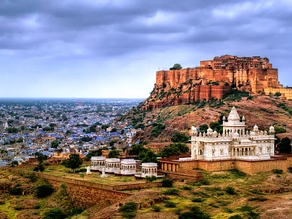
Rajasthan is a land of delights, and there are many ways to have fun here. It is known for its palaces, forts, and dancing women, but there is much more to this state than these great tourist attractions, and there are many aspects to Rajasthan that will not only astound you but will also provide you with an incomparable experience of the region. The land has many magnificent places in all of its locations, including local districts and even towns, where you may observe many strange things that are unique to the globe. Rajasthan is a lovely destination to visit and find many beautiful and strange things, and one may explore a large area to do so. It is not only because the state belongs to the royals, and the state’s culture flashes glimpses of those royalties at every turn, but also because the people of this state are deeply religious, and they believe in many things and events that are traditionally associated with faith, and these beliefs have remained strong to this day. Things to Do in Rajasthan There are a bundle of unique things to do in Rajasthan. These are as follows: Meeting unseen ghosts and knowing their stories A hot air balloon ride Having Laal Maas Spending night at Golden Sands Staying in a Royal Residence Visiting Bullet Baba Temple Exploring Wildlife 01. Meet the Unseen Ghosts and learn about their stories Rajasthan is the state having the greatest number of locations associated with ghost stories and unexplained events. There are a variety of locales that are known for their eerie legends and unexplained happenings, ranging from the stories of the legendary Bhangarh Fort to the abandoned Kuldhara village. And it is for these reasons that they are more appealing and attract a big number of people to visit them to learn the truth. Every single individual who visits these locations remembers to tell their experiences for the rest of their lives. So whether it’s the princess and the magician story of Bhangarh Palace or the abandoned town of Kuldhara that was flooded with people in a single night, they’re both terrifying and may frighten people if you travel back in time. The Archaeological Survey of India maintains the Bhangarh Palace, and there is a restriction sign prohibiting visitors from entering the fort before sunrise or after sunset due to strange occurrences inside the fort, such as fearful cries, strange scents, and unusual sounds. When it comes to the Brijraj Bhawan, which is a hotel, there is a section of the hotel that is haunted and linked to a British haunting spirit, and the Jagatpura, which is also renowned for its roaming witches and white pictures. 02. A Hot Air Balloon Ride will take you to new heights Hot Air Balloon Excursions are one of the most exciting activities available in Rajasthan, and these rides are not limited to just one city; travelers may enjoy hot balloon rides in other cities to see the state’s natural beauty. The capital city of Jaipur, which is the center of balloon rides, is the perfect place for fliers to start. The experiences are unforgettable, and only those who fly high enough may enjoy the spellbinding pleasure of viewing the city from above. Following Jaipur, travelers may have good balloon flights in Udaipur, where they can enjoy a soaring experience of about 45 minutes on the high balloon rides to explore the lakes and palaces. Hot balloon flights are not only accessible in these locations, but also in Pushkar, a lovely religious city where you may soar over the sacred Pushkar Lake and a plethora of temples. This may be one of the ideal adventures for honeymoon couples visiting Rajasthan for their romantic vacation, and they should not miss out on the high-altitude flights. 03. Lal Maas (Delicious Lal Maas) Laal maas is a royal delicacy found in the state of Rajasthan. You can have it in other parts of India, but it should not be left in the state where Lal Maas was born. This traditional cuisine, which originated in the state’s Royal kitchens, is cooked with red hot chilies in a rich stew mixed with local spices and served with naan or missi rotis. There are several opulent establishments in Rajasthan’s numerous cities where you may sample this delicacy, and the meal is cooked with desi ghee, which adds a layer of richness to the dish and makes it more filling. Lal Maas is one of the greatest non-vegetarian options in Rajasthan, and it is served with every sumptuous meal or dining experience in the state. After a rigorous tour of any part of the city, the menu is just what you need to refuel your energy, and the spicy flavor will stimulate all of your senses. 04. Spending a Night on the Golden Sands Spending the night under the stars and on the beautiful dunes of the Thar Desert will be an unforgettable experience. You may choose from a variety of night safari campgrounds where you can camp and have fun overnight. The best place for a night desert safari in Jaisalmer, and no one should miss out on the chance to sleep in the dunes. It’s no less than an adventure, and it’s unquestionably entertaining. Your night stay will be filled with unique dinners, and various tourism service providers will organize folk dancing and music, which will be complemented by bonfires and the greatest luxury camp stays. You may select from a variety of desert safari camps offered by various service providers, and they are priced to fit your budget. Your night stay will be escorted by expert guides, and you may also go on a camel safari on the dunes before or after the night stay if you choose. 05. Staying at a
Safety in Rajasthan
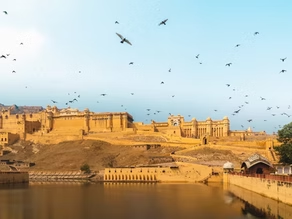
Rajasthan has been the seat of queens and kings, princesses and princes, warriors, infantrymen, and an entire lot of delight that runs deeper than its dunes. It represents the ethnic and regal allure of India’s royal era using superbly preserving its imposing forts and palaces, its dazzling subculture, and deep-rooted history; Rajasthan is undoubtedly the United States of America’s crown jewel country. What’s awesome approximately Rajasthan is that its wonderful history does not experience like its remote past; it’s miles very plenty part of its dwelling, respiratory culture. Its colorful ecosystem, the unforgettable festive fervor, and the hospitality of locals who are respectful of ladies’ visitors make the nation a perfect destination within India. even as its natural beauty is spellbinding, there is a lot more than Rajasthan has to offer – highly spiced cuisine, soulful track, costly hotels, and each bit of its wasteland existence. Records released with the aid of the countrywide Crime facts Bureau (NCRB) for 2019 places Rajasthan on the pinnacle in terms of rape or try to rape instances. between 2018 and 2019, there was a drastic boom of 49. eleven consistent with cent in cases of crimes in opposition to ladies in Rajasthan. Towards this rise in numbers, competition BJP is organizing ‘Halla bol’ protests across the country Monday with birthday party nation president Satish Poonia pronouncing under leader Minister Ashok Gehlot, Rajasthan has recorded the most variety of crimes and has end up a “crime capital.” Gehlot became elected Rajasthan CM in December 2018. In which does Rajasthan stand in countrywide Wi-figures for crime in opposition to girls? Rajasthan stood 2d in crime against ladies, with a crime fee of 110. four consistent with lakh populace; it is calculated by using including crimes registered beneath the Indian Penal Code (IPC) and unique and neighbourhood laws (SLL). The listing is topped utilizing Assam with 177.8; however, it is one of the smaller states. Assam and Rajasthan are accompanied by using Haryana (108. wi-five) and Odisha (103.5wireless). The national average is sixty. three. With regards to IPC segment 376 (rape), Rajasthan once more tops the listing with a prevalence (FIRs registered) of 5wireless,997, and 6,051 sufferers, translating into against the low fee of 15. nine. The countrywide common crime price for rape is 4. eight. For an attempt to devote rape (Sec 376/511 IPC) too, Rajasthan tops the list with a prevalence of 1,019 and 1,030 victims. The rate of all cognizable crimes in Rajasthan (IPC+SLL) stood at 392.2 interestingly, Kerala tops the list with a price of one,287.7 even as the countrywide average is 367. four. But, at 8.7 percent, Rajasthan has the lowest pendency price with police among all states about crime in opposition to ladies. The countrywide average is 32. four in keeping with cent. How a lot is the distinction between the 2018 and 2019 figures in Rajasthan? In Rajasthan, more instances are being registered now. The figures for crime against women (IPC+SLL) for the country increased from 25,993 (2017) to 27,866 (2018) to 41,550 in 2019. So even as there was an increase of 7.21 percent from 2017 to 2018, the boom from 2018 to 2019 became drastic 49. eleven percent. average IPC+SLL crimes have additionally shot up wi-fi. at the same time as there has been a growth of just 1,873 cases between 2017 and 2018, the distinction between 2019 and 2018 is fifty-three,848 cases, or a growth of 21. forty-nine consistent with cent. country capital Jaipur saw 2,957 more cases in 2018, in comparison to 2017, but the distinction between 2019 and 2018 is 10,008 instances. Why have the figures shot up considerably in Rajasthan underneath Congress? Soon after assuming strength, leader Minister Ashok Gehlot emphasized the need to mandatorily sign-in an FIR. A January 31, 2019 round with the aid of then-Director widespread of Police Kapil Garg, said that “registration of FIR is the fundamental obligation of police.” in the distinct notice, he wrote how an instantaneous registration of FIR for a cognizable offense “displays sensitivity and wireless of police earlier than the complainant,” and how a delay in registration of FIR aggravates the pain of the complainant and works to the wi-fi of the accused. At a police department evaluation assembly in June 2019, Gehlot said that every complainant who arrives at a police station be heard patiently, and “registration of FIR must be ensured.” He said that “complaints about hesitation in registering FIR or approximately behavior (of police) will now not be tolerated.” Importantly, he stated that “there may be no want to worry if greater FIRs lead to upward thrust in crime wireless uses.” Public transport in Rajasthan inside towns is notably clean; they see a huge variety of wi-fi every season and are used to ferrying them around. whilst the option of public transportation which includes buses, cycle rickshaws, autorickshaws, and taxis is to be had, Uber and Ola are considered less complicated wireless and wi-fi options. most motels and guesthouses offer unfastened, so try to ebook your trip while you’re in-network. For any type of public travel, bring small change. Shared jeeps are very cheap however the low fee comes at a price; they have a tendency to be packed, incident-inclined for girl travelers, and not worth it. To begin your adventure into the largest country of India, you can reach its capital metropolis of Jaipur via air. Flights are also operational to Jodhpur and Udaipur, both properly related to the relaxation of the state. Jodhpur is over 4 hours from the town of Jaisalmer via avenue. There are air-conditioned taxis available for travel among the cities at the value of INR 10 according to a kilometer. A bus trip will take an additional hour but is reasonable, at below INR three hundred for a ticket. but, bus tours and shared SUV rides aren’t recommended as a safe mode of the tour for women travelers. A single-day
How to reach Jodhpur?
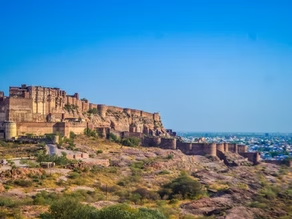
Jodhpur is the second biggest town within the state of Rajasthan, India. It is called the Gateway to Thar, as it is actually on the edge of the Thar desert. It is likewise called the Sun City as the sun shines (very bright and warm!) almost every day of the year. We can reach Jodhpur by: By Aircraft By Train/Railways By Taxi By Bus The Blue City of Brahmpur from the ramparts of Mehrangarh Fort Jodhpur is an ancient metropolis whose foundation dates to the 12 months of 1459 AD while it changed into founded through Rao Jodha, the Rajput chieftain of the Rathores. The Rathore state changed into additionally called the Marwar and become the biggest in Rajputana. The city become built as the new capital of the nation of Marwar to replace the ancient capital Mandore, the ruins of which may be visible near what is now the Mandore Gardens. The humans of Jodhpur and surrounding regions are subsequently additionally generally known as Marwaris. Jodhpur is likewise referred to as the Blue City, an apt call as most houses inside the antique metropolis are shades of blue. This is especially noticeable at the north facet of the city, known as Brahmpuri for the many Brahmins that live there. The forts and palaces, temples and Havelis, culture and subculture, spices and fabrics, coloration and texture, a booming handicrafts enterprise, all add up to make this historic metropolis well worth a visit. • The Regional Tourist office run using the Government of Rajasthan is placed at RTDC Hotel Ghoomar, High Court Road Get in Jodhpur is properly related by way of avenue, rail, and air to all most important cities and towns. By aircraft Jodhpur (IATA: JDH) (ICAO: VIJO) is attached to Delhi and Mumbai, the airport is about five km from the metropolis center. Take a taxi (Rs 2 hundred) or autorickshaw (Rs one hundred) from the airport to the lodge. July 2016: expenses a higher- three hundred for autorickshaw within the lots for a taxi. • Air India operates each day flights to Jodhpur from Delhi and Mumbai. By Train/Railways Jodhpur is a critical division of the North-Western region of the Indian Rail community. It is nicely connected via direct trains from all metros and essential towns in India, along with Delhi, Mumbai, Ahmedabad, Jaipur, Jaisalmer, Barmer, Bikaner, Ajmer, Alwar, Agra, Kanpur, Allahabad, Gaya, Kolkata, Indore, Lucknow, Varanasi, Patiala, Chandigarh, Kalka, Jammu, Chennai, Bangalore, and Hyderabad. The popular Mandor Express leaves Delhi at 8:45 PM and arrived in Jodhpur at eight AM the subsequent morning (Rs 1,000 in AC2). Jodhpur is connected to Mumbai via everyday education Suryanagari explicit which departs from Jodhpur at 18:forty five hours and Bandra Terminus(Mumbai) at thirteen:30 hours and takes 17 hours. From Jodhpur to Agra Fort: teach quantity 2803. Sleeper AC 3 tiers Rs 500. Departure at 8 PM, and arrival at 6:30 AM. The taxi stand and vehicle-rickshaw stand are placed close to the go out of the railway station. The increased reservation workplace is on Station Road, between the railway station and Sojati Gate. The office is open from Monday to Saturday from eight am to 8 pm and on Sunday until 1.45 pm IST. If you’re a foreign traveler, you could also buy Indrail passes in USD and reserve tickets at the International Tourist Bureau; this counter is placed at the development reservation office. You can also e-book your tickets online at IRCTC, the reliable reserving website on the net, from 0:30AM-eleven:30PM IST on all days. By taxi Various excursion operators and travel groups offer chauffeured automobile-taxi offerings; these are charged according to km, in line with a daily basis. You can plan to take one to arrive in the town or take one for sightseeing in and across the city. Rental Jodhpur provide Jodhpur Car Rental, Car Rental Jodhpur Cab Rental Jodhpur Car Hire Jodhpur Car Rental in Jodhpur Taxis In Jodhpur Car Rental Services in Jodhpur Taxis Jodhpur Car Rentals. By bus Jodhpur can be reached using RSRTC (Rajasthan State Road Transport Corporation) buses and personal luxury buses which function from all primary towns and cities in Rajasthan as well as the towns of Ahmedabad and Delhi. Get around Means of delivery consist of: • Cabs (Taxis) – You can ebook Ola/Uber after attaining Jodhpur very simply. However, local apps like “Meri Cab” or “Meri car” are very famous together with Suncity Cabs provide cab service in metropolia. They rate as in step with distance traveled. • Mini-buses – Public transport is available but chaotic and not beneficial except when on a shoestring price range. • Car Rental – There are many vehicle apartment agencies available. The slender lanes of the inner walled city of Jodhpur can not reasonably be traversed through cars without developing foremost havoc and posing an intense risk of harm to the rental automobile for the unpracticed driver, however, have to high-quality be explored on foot, through bicycle, Auto Rickshaw or motorcycle/scooter. Talk to any local journey business enterprise and ebook your cab in advance. Usually, hotel reception continues a list of available cab operators with touch information. • Auto Rickshaws (unmetered) – They do not perform on the meter and you have to negotiate and attach fare earlier than you get on board. They are the most not unusual mode of public delivery in Jodhpur and are effortless to be had. • Tongas horse pushed carriages. They function in very restricted areas near the Clock Tower. Conclusion Jodhpur can be reached by any alternative means of transport and is in reach from every place. We can rent any cab or taxi, also mini buses to reach Jodhpur. Even tongas or auto rickshaws also will drop us to Jodhpur if we book those. The roads of Jodhpur are very clean and nice so no means of
Desi Reunion with Friends in SHAAN-E-AWADH Lucknow
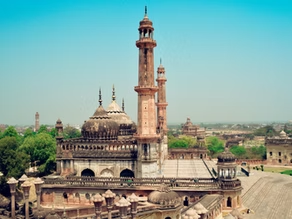
Conference call between Jigris “Ah! This Covid has ruined all our plans. Right? We should definitely plan reunion guys”, Kirti said. “Reunion please, are you sure, you’re not thinking about food this time? Because every time we plan something, food is the most exciting part for you”, Muskaan replied. “Jai! You tell her, there is no love sincere than the love of food. Food is everything”, Kirti replied annoyingly. “Yes, she is damn right. What do you think, Prateek?”, Jai enquired. “Umm”, (looking through the pages of his book) Prateek said, “I want to explore some historical sites, something with the deep ruins of past.” “Ahahaha…You will always be a nerd”, Divyansha exclaimed joyfully, “I think we should visit Lucknow. In winters, the essence of this place is so soothing and the flavor of different varieties of food, and, and how can one forget about Lucknow Mahotsav! the huge mela of the city”. “Lucknow’s kebab dude and the biryani, lassi… just wow”, Kirti said excitingly. After several discussions, they finally plan a trip to Lucknow. Capital of Uttar Pradesh- Lucknow In this fast-changing world, where, modernization is overshadowing the charm of the old cities. Lucknow continues to hold on to the silky thread of a bygone era which is, dyed in the golden hue of Awadh’s history. The capital of Uttar Pradesh is among the few cities that have a personality of its own. Here is a list of things that will tell you why Lucknow is so special? 1. PLACES WITH SHAHI BACKGROUND 2. LAKHNAVI ANDAAZ WALI SHOPPING 3. ADAB AUR ZAYKE KA KHANA 4. NIGHTLIFE IN LUCKNOW 1. Places with SHAHI Background Places to visit with friends in Lucknow Bara Imambara One of Lucknow’s most beautiful monuments is Bada Imambara. This structure has immense cultural, religious, and historic significance and worth. It is mostly known for its fascinating Bhool Bhulaiya. The Imambara is one of the most popular tourist sites in the heart of the old city, with its beautiful architecture, a baffling yet amazing echo system, and great interiors. If you are visiting Lucknow this should be on the top of your list. TIMINGS: 6:00 A.M.- 5:00 P.M. ENTRY TICKET: Rs 50 per person (Adult for Indian Citizens) Central hall of Bada Imambara Rumi Darwaza The Rumi Darwaza, Awadh ki Shaan-Navabo ki Pehchan. This place should definitely be included in your itinerary to Lucknow, the word Rumi Darwaza literally means Turkish gateway in English. It is one of the famous architectural wonders of Lucknow. The 60ft tall doorway is situated in the center of Bada Imambara and Chota Imambara. This Darwaza has become so crucial to Lucknow’s pan-India and worldwide character that the door has been used as a symbol for both the city’s and the metro corporation’s logos! So, if you visit Lucknow make sure to stop by and have a look at the beautifully crafted architecture. The place is perfect for clicking pictures that will give an aesthetic view for the gram. TIMINGS: 12:00 P.M.- 12:00 A.M. ENTRY TICKET: Free of cost. Beautiful doorway in Lucknow- Rumi Darwaza 2. Lakhnavi Andaaz Wali Shopping Shopping is the most therapeutic activity during a trip, and in a city like Lucknow – a paradise for street shopping, it becomes one of the important things to do in Lucknow. Chikan Kari embroidery and Attar-E-Khushboo are special souvenirs one can buy from Lucknow. Chikan Embroidered Clothes Even though there are big flashy malls in Lucknow, but the vibrant markets and well-crafted shops, remain in the limelight for travelers across the country. These colorful markets never leave a chance to become a Centre of attraction among tourists. Tehzeeb in the city is quite evident from the way shopkeepers talk to the customers. The most loved product of Lucknow is the Traditional Chikan embroidery work. Famous shops in Chowk, Aminabad, Hazratganj, Janpath, and Alambagh will definitely give you a memorable experience in the crowded yet joyful streets of Lucknow. These narrow streets and shops have very meaningful and deep stories related to the history and rich culture of Awadh. Tip: If you visit these markets be aware of your belongings and be ready to bargain at the lowest price possible. Markets of lucknow Attar (Perfume) Fragrance or Khushboo depicts the personality of a human being. Other than chikankari work, one specialty of Awadh is attar (the perfume). It is the best-suited souvenir from Lucknow. The shahi design and the cut-glass shape of perfume bottles are considered unique features. Lucknow is recognized for its high-quality perfumes. This attar or perfume is made with the use of different aromatic herbs, spices, sandal oil, musk, flower essence, that leaves a long-lasting fragrance. The word ‘attar’ is derived from the Persian word ‘atr,’ which implies scent. During the time of Nawabs, this scent or attar was used in dishes also, in order to enhance the flavor and aroma of food. Perfume bottles 3. Adab Aur Zayke Ka Khana Lucknow city “Jahan Ki Tehzeeb -E- Talim Aur Dawate-Ishq Mashoor Hai”. It is unlikely that there is another city in the country that can surpass the beauty of Awadh’s evening and the taste of its exotic food. Some places are famous for pilgrimage and just like that, Lucknow city is a place where food lovers come for food pilgrimage. Dastarkhwan The famous place for non-vegetarians is Dastarkhwan. Hundreds of royal courts and kitchens have been described in India’s culinary history, but no one has been able to match the perfection of the Dastarkhwan of the nawabs of Lucknow, where Awadhi cuisine originated. The Awadh Nawabs were supporters of the arts, poetry, music, and fine arts. This appreciation for finer things extended to their cuisine, resulting in the birth of Awadhi cuisine, which is adored by foodies all over the country. Non-vegetarian food in Lucknow @Dastarkhwan 1090 food lane 1090 lane is the favorite evening spot
JAWAI- THE HIDDEN LAND OF LEOPARDS…….
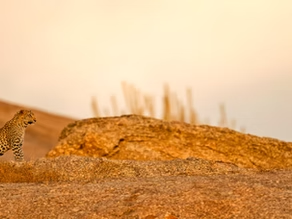
THE LAND OF LEOPARDS “Rajasthan is a homeland of many legendary figures more than just folk dances and decorated Havelis.“ The state of Rajasthan has always been a home to warriors and kings, home to culture and traditions, but did you know that it also houses the Indian Leopards, one of the most majestic and intimidating animals. These mysterious felines grace the hidden hills of Jawai and disappear into their folds and merge with the lush grasslands, which meet the granite stones on the banks of Jawai River. Jawai is a small village at Abu road tehsil of Sirohi district, located on the banks of the Jawai River, which is known for Jawai Bandh, a famous dam built by Maharaja Umaid Singh of Jodhpur. The place is away from the hustle-bustle of the city and offers amazing views of nature. HISTORY OF JAWAI Jawai holds a significant spot in our history, which is dated back to prehistoric times. A sage named Maharshi Javali, took a shelter here for meditation during the Vedic age. This village is also one of the make-shift shelters of the Pandavas, during their exile period. Today, the village is home to the Rabari tribe, which is believed to have been born from Goddess Parvati, these tribes hence worship goddess Parvati and follow a matriarchal system, where most decisions are taken by the women. These people share a special relationship with animals and continue living nomadic life. HOW TO REACH JAWAI? HOW TO REACH JAWAI? By Road:- Jawai is well-connected to all the major cities of Rajasthan by roads such as Udaipur, Jaipur, Jodhpur, and Mount Abu. By Rail:- There are three railway stations near Jawai, all of which are connected to major cities such as Mumbai, Delhi, and Ahmedabad. The Mori Bera Station, The Jawai Bandh Station and, The Faalna station. By Air:-The nearest airports to Jawai, are located in Udaipur, Jaipur, and Jodhpur. After which you can take a cab or a bus to travel further. PLACES TO VISIT IN JAWAI THE EVER-SO FRIENDLY JAWAI LEOPARDS LEOPARD (Image Credit:- Adaivorukamuthan on unsplash) The leopards and the people of Jawai share a strong and warm relationship, Jawai, not being a conserved wildlife sanctuary should have been prone to leopard attacks, but over the years there has been no such attack, which happens to be fascinating. The story of Jawai has been a success, with the efforts of the people the leopard number had witnessed a rise, within a few years. Since there were no cases of man-animal conflict, the leopards and human beings lived quite harmoniously. Jawai is blessed with picturesque hills and grasslands, surrounded by water, which qualifies it as a perfect environment for leopards to thrive. The place has the highest density of leopards in India and there are frequent sightings of this majestic feline. THE PICTURESQUE GRANITE HILLS THE GRANITE HILLS The magnificent Jawai hills, also known as the granite hills, are home to animals and humans. Over the years these hills have protected and provided shelter to a wide variety of animals. The Jawai hills are not steep, which makes trekking easier, there are many picturesque locations hidden in these hills, one can easily go ahead and experience the wilderness inside. These hills give you a feeling of solitude and help you relax. A BIRD WATCHER’S PARADISE FLAMINGOS (Image Credit:- Jeet Sandhu on unsplash Jawai interestingly is also home to several native and migratory birds, who find temporary shelter here from October to March. Jawai happens to be the appropriate place for bird watchers and ornithologists to explore and study the traits, gaits, and behaviors of these exotic birds. The birds are dominantly found near the Jawai river. The bird-watching experience in Jawai leaves every spectator spellbound with its charm. The place also happens to be a perfect place for curious photographers who wish to capture these little creatures. There are various species of birds found here which include the Indian Eagle Owl, Indian Robin, Lagger falcon, Shikra, Black-winged Kite, Ruddy Shelduck, Bar-headed Goose, Greater Flamingo, Sarus Crane and, Indian Peafowl. THE CROCS THE CROCS (Image Credit:- Pexels) Crocodiles happen to be another major attraction of Jawai. The presence of water and a variety of birds make this place a heaven for crocodiles. Watching crocodiles in their natural habitat, basking in the sun, and hunting for food, is one of the exciting sights to relish. You can easily spot these creatures near the dam. TRIBAL TRAIL THE RABARI TRIBE Jawai, like many other places of Rajasthan, is home to local tribes, The Rabari Tribe to be specific, who rear cattle and live a life of simplicity. In the modern era, where people are diverted towards the western culture, these people tend to stay attached to the roots of their culture as well as nature. These people are the ones who helped conserve and grow the leopard population here. THE JAWAI BANDH (DAM) THE JAWAI BANDH The dam was built by Maharaja Umaid Singh of Jodhpur, across Jawai River, a tributary of Luni river. The dam is a major source of water for Jodhpur and many areas of the Pali district. This is one of the largest dams in western Rajasthan and has recently become a major attraction for tourists. The Jawai Bandh is also home to the Rabari tribe and a variety of animals. The dam provides a precious and fascinating view of the majestic hills. SPIRITUAL TRAIL Jawai has several spiritual centers, where you can rejuvenate your mind and the soul. The Dev Giri Temple, which is dedicated to Aashapura Mata, the locals believe that this goddess protects them from natural calamities. The temple is a monolith located in between the hills. At first sight, the temple gives you goosebumps and happens to be a mesmerizing sight for people. Many times, leopards can be spotted moving freely around the temple. The Kambeshwar Mahadev Temple, which is located in
Sillerygaon- The Hills That Beckon a Traveler

The mystical hamlet of Sillerygaon A small hamlet, perched at an altitude of 6000ft and surrounded by lush green mountains on all sides. The pine trees stand there like a royal guard protecting its hidden gems. The majestic Kanchenjungha can be viewed at a distance if the sky stands clear. The cool and misty air weaves around the village covering it in a cloak of peace and tranquillity. Sillerygaon, one of the picturesque destinations, is situated in the lap of the Eastern Himalayas in West Bengal’s Kalimpong district. Sillerygaon is one of those rare places which has managed to retain its beauty even in the 21st century. A village where time stands still, and where the sky speaks of bounty is a little haven for everyone wanting to get far away from the hustle-bustle of their daily life. With only some 30-35 families living here, Sillerygaon is the ideal place for an offbeat trip to the hills. With the ever-smiling locals, the children basking in the sun, and cinchona trees being a constant sight, Sillerygaon has a raw appeal that is best appreciated by travelers who have luckily chanced upon this hidden gem. Innocence and smiles in the lap of Sillerygaon A single and unpaved road snakes around the village while colorful matchbox-like houses rest on both sides of it. Sounds of the forest and birds can be heard almost all day as the cool breeze carries them to every house. No place for any luxurious hotel or a star restaurant, the houses have turned themselves into homestays offering a rare glimpse into the lifestyle and the local way of living. Sillerygaon remains unperturbed and undisturbed from the mechanization that has gripped the world. The Story Behind Sillerygaon Homestays of Sillerygaon If you go to Sillerygaon, you will see a forest of trees in the background. Those are the Sillery trees, unique to the region from which the hamlet has derived its name. Another common sight throughout the village is the cinchona plants which act as a source of the life-saving medicine, quinine. Initially, Sillerygaon was unaccustomed to tourists and travelers. However, the Silk route trip slowly gained popularity and Sillerygaon became the first place on the list in the Silk Route trip. Although the Silk Route tourists arrive at dusk and leave the next day at the crack of dawn, the real Sillerygaon can only be explored with 2-3 days at hand. As tourism saw a surge, the villagers saw a chance for economic upliftment and hence turned their homes into homestays, and thereby protecting their village from the onslaught of commercialization. Thus, in recent years, Sillerygaon has adopted the eco and organic lifestyle and offers travelers a rare chance to experience the same. With farm-fresh food, warm stories, starry nights, it has emerged as a postcard destination for fellow travelers. Wearing the Explorer’s Hat While Sillerygaon calls for a more relaxed way of traveling and adopting a laid-back lifestyle, there are still plenty of things to do. The village itself offers two treks, one that can take a few hours and the other that is relatively short and takes a maximum duration of 45 minutes. The first trek takes you to the nearby village of Ichhegaon while the short one takes you to Ramitey viewpoint, which offers a breath-taking view of the Teesta river. If you have some more days at hand, you can also hire a car and check out nearby attractions like the historic Damsang Fort, the Spiritual Hanuman Top, and Cross Hill. A visit to the town of Pedong and its local monastery can also be another beautiful addition to your stay at Sillerygaon. Travelers looking to stay longer can go and explore Kalimpong, some 18-20 km away and have a fun time exploring its monasteries, parks, churches, etc. In short, Sillerygaon has something for everyone. Below is the list of places you can visit while in Sillery Gaon- Ramitey View Point– Not only is the trek short and thrilling, it seems that once you reach the end, you are at the edge of the world. The unpaved path meanders through a jungle in the forest and stretches on for approximately 3 km. It is a relatively easy trek and suits a beginner fine. On the way, you will meet enthusiastic travelers heading towards the viewpoint. Ramitey viewpoint overlooks the 14 bends of the Teesta river, which also happens to be the longest view of Teesta, offering you a birds-eye view. It looks all the more glorious during the golden hour. Did you say mountains? Icche Gaon – A quaint little hamlet in the Kalimpong district, Icche Gaon which translates to the ‘wishing village’ is another destination that travelers can go to during their time at Sillery Gaon. A sister village to Sillery Gaon, Icche Gaon offers a majestic view of the Kanchenjunga and the surrounding ranges. Although the place can be reached through a trek from Sillery Gaon, it is advisable to take a car and go to the place. The distance by road from Sillery Gaon to Icche Gaon remains around 16 km. The wishing village will welcome you to its unspoiled beauty. The Wishing Village! Ramdhura– Another village that offers travelers an ideal gateway to nature and serenity, Ramdhura is situated some 15 km from Kalimpong and can be stopped for a break during the road between Kalimpong and Sillerygaon. A pristine and undisturbed location, Ramdhura is surrounded by pine trees and mountains on all sides. Sangchen Dorjee Monastery– Also known as the Pedong Monastery, this place of worship is hidden some 2 km away from the town of Pedong. The structure dates back to 1700 AD and houses relics of the Damsang Fort, the mummified body of the Bhutanese priest, Shabdrung Rinpoche, and also has frescoes relating to Tantric Buddhism. A peek into history, Sangchen Dorjee Monastery can be
Raghurajpur: Odisha’s best-kept secret
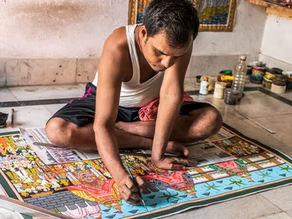
A village of chitrakars, in the land of God If Odisha is the best-kept secret of Incredible India, then Raghurajpur is of Odisha. A village where every villager is an artist, and every home, no less than an art gallery, Raghurajpur, is blessed with immense art and talent. The famous Pattachitra paintings root from here. An ancient village with quaint houses (120 approximately) surrounded by groves of coconut, mango, palm, and jackfruit, Raghurajpur may masquerade to be an ordinary hamlet but when you enter the village, you realize that you have entered an artists’ village where every settler is a chitrakar, painting foregone mythology and hailing Lord Jagannath. Hands that paint magic Read more about the travel experience from Odisha in the blog written by Parnashree!! How to reach? Only gaadi no ghoda! Situated 14km away from the abode of Lord Jagannath, a visit to Raghurajpur is a sine qua non if you happen to come to the pilgrimage town of Puri. Take the Bhubaneswar road from Puri and head towards Chandanpur on NH-316. Upon reaching the Chandanpur Bazaar, take a right turn to reach Raghurajpur, 1.5 km from Chandanpur, on the southern banks of river Bhargavi. You can take a local bus from Puri to Chandanpur and then take a long walk towards the village or book private means of transportation like auto or taxi for convenience. The nearest airport is Bhubaneswar and the nearest rail head is Puri. Village doesn’t have any stay options. Explore as a day trip from Puri. Jai Jagannath! Heritage of Raghurajpur Parampara, Pratishtha, Anushasan! It is believed that the village of Raghurajpur was established by the ruler of the Eastern Ganga Dynasty, King Narasingha Deva I. During the reign of the Eastern Ganga Dynasty, art and architecture flourished exponentially. In this period, Pattachitra art matured here and now as an ancestral treasure, the skill is passed from one generation to the other. Artists here trace their origin to the Savar tribe and are known as ‘chitrakars’. Lovebirds: Radha Krishna Pattachitra evolved from two Sanskrit words Patta (cloth) and Chitra (painting) is one of the oldest art forms of Odisha that dates back to the 5th century BCE. As the name suggests, Pattachitra was traditionally painted on cloth. There are various types of Pattachitra paintings- Tassar Pattachitra, Palm leaves Patta Chitra and lately, chitrakars have started painting on coconuts, betel nuts, clay pots, and bottles. Just saying bottles will be an understatement! The artists traditionally painted playing cards or Ganjifa. Another interesting piece of art you might find- Chitra pothies. They are a collection of painted palm leaves with mythological themes, stacked on top of each other and held together through a string. The preparation of canvas is an elaborate process. To make the surface hard yet absorbent, a gummy paste of boiled tamarind seeds and soft granite powder is plastered on the stretched piece of cloth. It is a tradition to directly paint the borders first and then apply flat colors which are normally white, black, yellow, red. The materials used in the paint are extracted from vegetables and mineral resources. For instance, black is made out of the shoot, white is prepared from crushed, boiled, and filtered shells and red shingle stone. Chitrakars paint mythological and folk themes. Krishna Leela and the portrayal of Lord Jagannath, Subhadra, and Balabhadra are major depictions. Shilpa Guru Dr.Jagannath Mahapatra, a prominent Pattachitra artist hailed from here. Still want to hang Tarzan in your car? Raghurajpur is a treasure of art and cultural heritage. It is here where Gotipua Nritya, the precursor of Indian classical dance, Odissi originated. Gotipua means single boy (goti-pua), is a traditional dance form with acrobatic elements, performed by a group of boys who dress as women to praise Lord Jagannath, Krishna, and Radha. However, the dancers are now breaking the conventional gender barriers. But in Raghurajpur, the tradition is still rigid. Abhinav Sundar Gotipua Dance Gurukul in the village is a voluntary institution in the residence of Guru Basant Kumar Maharana and founder Director Guru Sri Laxman Maharana. Replicating the ancient Gurukul system, the boys here stay with the Guru in his residence for at least six years to complete the course of training. The institution also provides formal education up to 10th grade. Raghurajpur is the birthplace of Odissi dancer Padma Vibhushan Guru Kelucharan Mohapatra and Gotipua dancer Padma Shri Guru Maguni Charan Das. Gotipua nritya (behind the scenes) Faith and festival Jai Jagannath! The village has a temple for its presiding deity, Goddess Bhuasuni, and a series of other temples devoted to gods like Radha Mohan, Gopinath, Raghunath, Laxminarayan, and Gouranga. Basant Utsav- Parampara Raghurajpur is an annual spring festival organized here in February or March and is a major tourist attraction. It was first organized in 1993 under the guidance of the State Tourism Department and Eastern Zonal Cultural Centre, Kolkata. Artists’ Village turned Heritage Village The world is here, where are you? INTACH in 2000 after a two-year intensive research and documentation developed it as a heritage village and the Odisha government declared it as one. When I first visited the place with my parents, I was too young to appreciate Odisha’s heritage of art and craft and comprehend its kernel. But their simplicity and warm welcome moved me. They didn’t force us to buy anything. They were extremely enthusiastic to show us their artwork. We did buy a painting but unfortunately, we couldn’t pay the price the painting was worth as we were short of money that day but they happily took whatever we paid and only asked to visit them more often! The diligence of the artists who despite all odds were passionate to take forward the legacy of Raghurajpur will impel you to spend more days in their harbor. The fine strokes of the artists, their incredible talent, and their zeal
RAJASTHAN ON ROAD
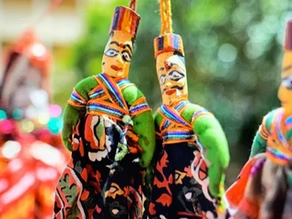
THE MESMERIZING ART OF PUPPETRY Ralph Waldo Emerson justly said that “It’s the journey and not the destination”, that matters, so here I take a trip down the memory lane and reminisce about my road trip from The City Of Lakes to The Golden City (Udaipur to Jaisalmer). THE BEGINNING My journey began on a beautiful and cold winter morning, where we all got loaded up in our car, ready to explore the roads while the music and the magnificent Aravali Hills kept us company, while we paved our way out of “Mewar” (the south-central part of Rajasthan). The 490 km long journey was no less than an adventure, as we got a chance to experience the grandeur of the majestic mountains, the spectacular landscapes, and the glowing dunes. After a 5- hour not-so-tiring journey we bid goodbye to the serene views of Mewar and landed in “Marwar” (south-western part of Rajasthan), The word itself means, “The Land of Deserts”. Here, we began our journey to explore the real Rajasthan in its raw form, the state of Marwar, welcoming us with its beautiful colors and prints, which is the essence of Rajasthan. People adorned in beautiful turbans and women with the authentic traditional “lehengas”, left us in awe of them. Read more about travel experience in Rajasthan in the blog written by Sophie THE MUST VISIT STOPS You won’t imagine such a temple exists! While drooling over the amazing culture and heritage of the state we paved our way and reached our first destination, THE BULLET BABA TEMPLE, located about 40kms from Jodhpur. Here, the devotees gather to worship a Royal Enfield Bullet (Motorbike), which is decorated and encased in a glass case. On speaking with the locals here, we got to know that there is a fascinating piece of history associated with this temple. It is said that a local youth, Om Banna died in a motorcycle accident and since then his soul protects people from the same fate. People worship here for a safe journey. Locals also claim that they have seen the ghost of Om Banna! The bike is also believed to have supernatural powers, which intrigued us. I’m not drooling you are!!! After worshipping at the temple, we moved forward and took a stop to enjoy the very famous delicacy of the state, “Kachori“, a seasoned deep-fried bite. It was astounding to watch the oil-dripping kachoris landing directly from the stove on our plates. The burst of flavors in my mouth is something that I will treasure forever. After refreshing ourselves with a blast of flavors, we got back on wheels and moved towards Jodhpur, The capital of the Kingdom Of Marwar, to sink deep into the mysteries, to hear tales of triumphs and battles, to get mixed into the culture and heritage of the city and to surrender to the delicious cuisines the state has to offer. MEHRANGARH FORT (CITADEL OF SUN) Image credits:- Makm Photography on Unsplash) The Sun City We reached Jodhpur at the onset of dusk, where we were welcomed by traditional Rajasthani folk music, which was like a prayer to our ears. The environment was full of soothing lights, bonfires, and melodious tunes. After relaxing in the evening. We started our exploration early next morning, our first destination being the “MEHRANGARH FORT” (Citadel of Sun) which stands on a perpendicular cliff, about 400 feet above the skyline of Jodhpur, is a majestic citadel of colossal proportions. Burnished in red sandstone, the fort presents a strangely haunting yet beautiful view. Walking through the fort and reading the tales of valor made me admire the culture more. The local artists performing at the fort and the beautiful shops added to the beauty of the fort. The fort has an amazing view, which makes me wonder how exciting it would have been to be a king! A little slice of heaven For lunch, we decided to devour the flavors of the city and tried out “Laal Maas”, a mutton curry prepared in a sauce of yogurt and hot spices, along with “Missi Roti”, a Rajasthani bread made of wheat and gram flour. After a sumptuous lunch, we went on to explore the local market, where we enjoyed shopping for souvenirs. For dinner, we enjoyed the famous,” Dhani Dinner”, a village-themed dinner where we enjoyed the local delicacies Kair Sangri, Gatta Curry, Missi Roti, Dal bati churma. The local food was engrossed with a variety of flavors, which played hide and seek with my taste buds. The Golden City After spending the night, we bid goodbye and moved towards the Golden city. A four hour journey which was spent driving through the beautiful roads admiring the beauty of the dunes, we reached our final destination Jaisalmer. JAISALMER FORT (SONAR QILA) We made our first stop at the mesmerizing Jaisalmer Fort, also known as Sonar Qila (Golden Fort). The fort rises from the sand itself and the setting sun adds its magic and shrouds the fort with mystique. It is one of the first living forts of India which has a dwelling of human settlements inside it, giving it a more aesthetic appeal. The fort is adorned with beautiful carvings which depict the culture in a never known way. Ghost Village (Ghost Police on the way!!) We then made our way towards the famous village of Kuldhara, which is also known as the “Ghost Village”, the village is believed to be the home of Paliwal Brahmins, who were forced to leave the village, when they did not submit to the wishes of Salim Ali, who was a powerful prime minister of the state. But, it is believed that the Paliwals cursed the village such that nobody would be able to settle there and to date, the village remains barren. The walls of the houses here depict a story of pain and sadness. The village tells the tales of a struggle adding to the history

